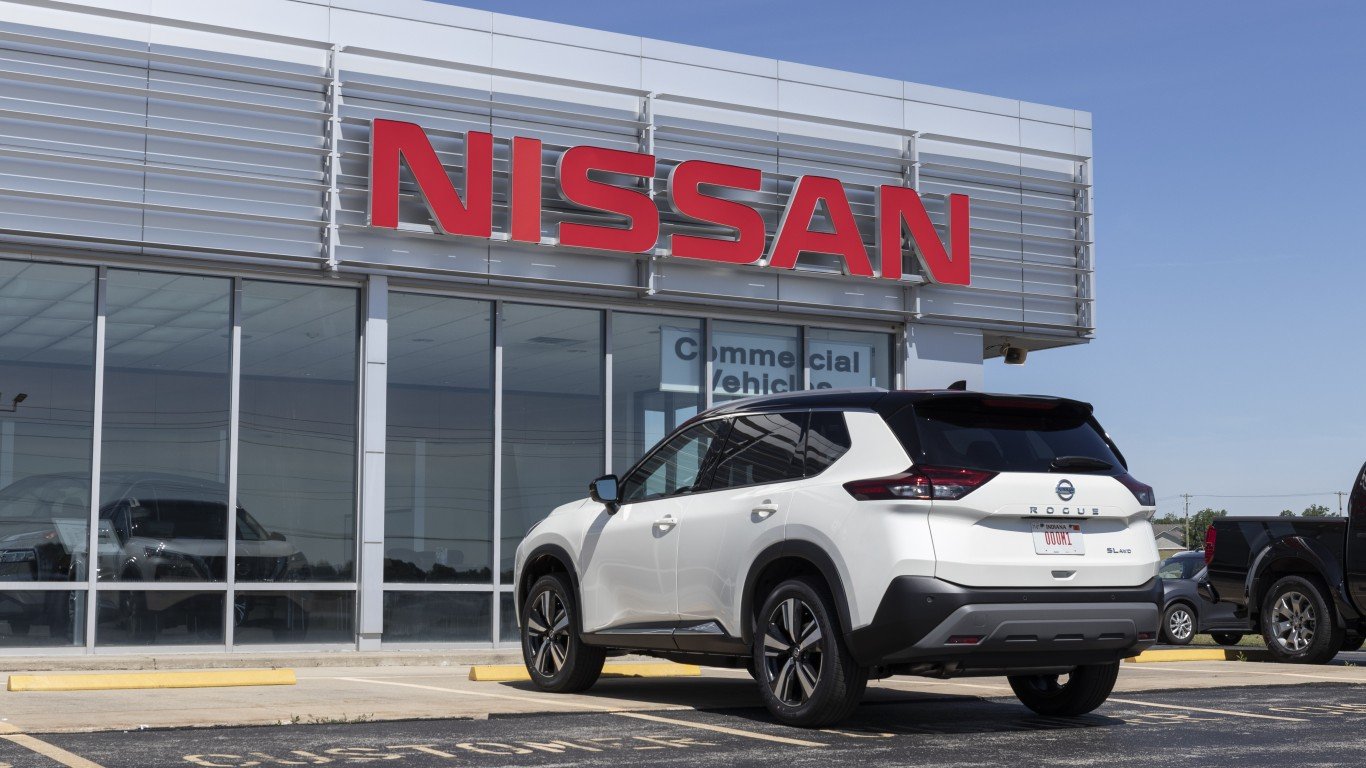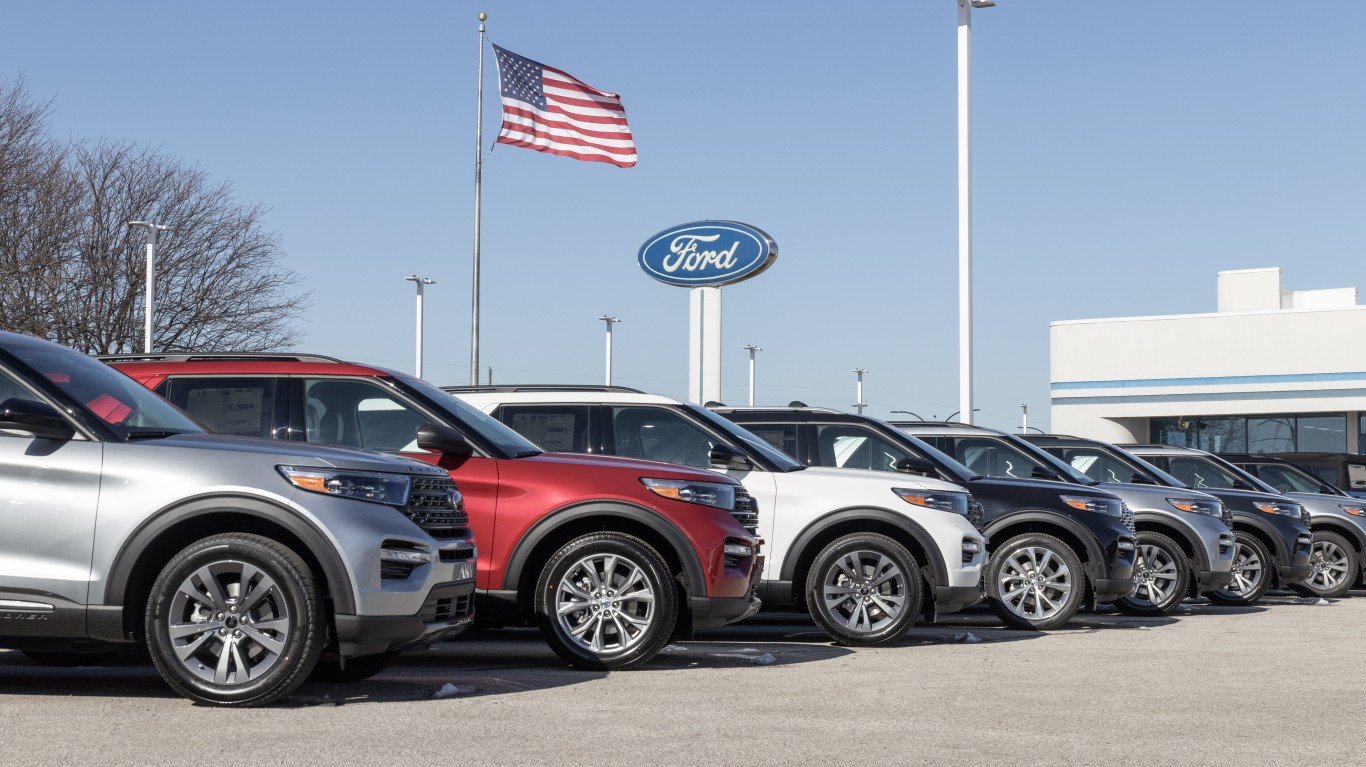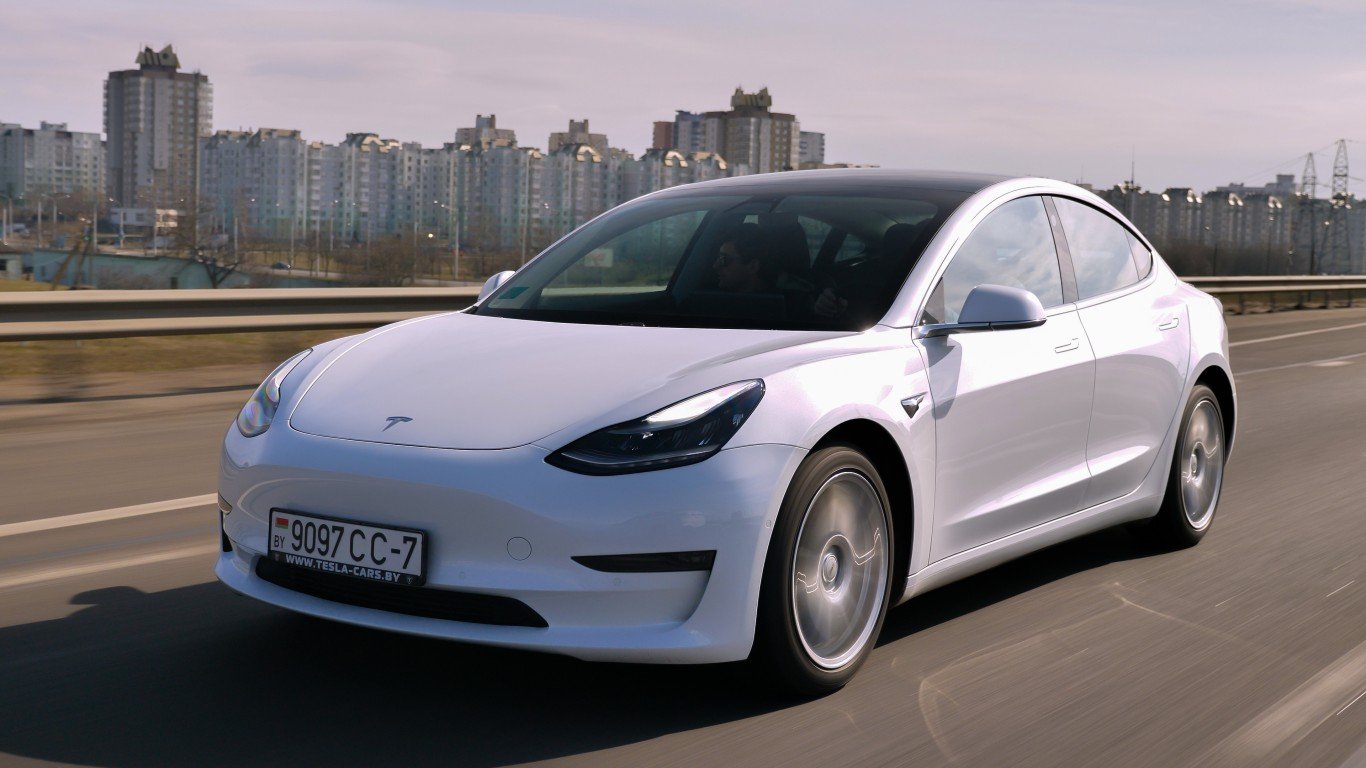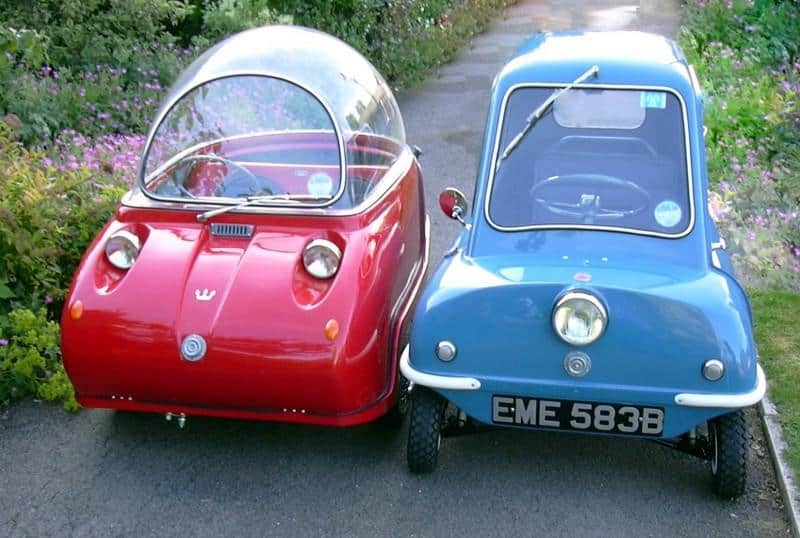

The 1960s were defined by social and cultural upheaval, civil rights movements, and anti-war protests. A counterculture pulsating with individualism and rebellion vibrated and snapped like a livewire challenging traditional norms and demanding equal rights. The automotive world responded with significant shifts in design amid advancing technology. Muscle cars, symbols of speed and freedom, catered to the growing demand for performance-oriented automobiles. U.S. car manufacturers began to experience more competition from the global arena, with European and Japanese manufacturers gaining a share of the American market. As the decade drew to a close, safety features, including seat belts, collapsible steering columns, and stringent bumper sanctions, along with growing concerns regarding fuel economy and lower emissions, altered the course of the American automaker. Take your Dramamine, buckle up, and come along with the 24/7 Wall St. pit crew as we peel through the 30 coolest cars released in the 1960s, chronologically.
1. 1960 Chevy Corvair
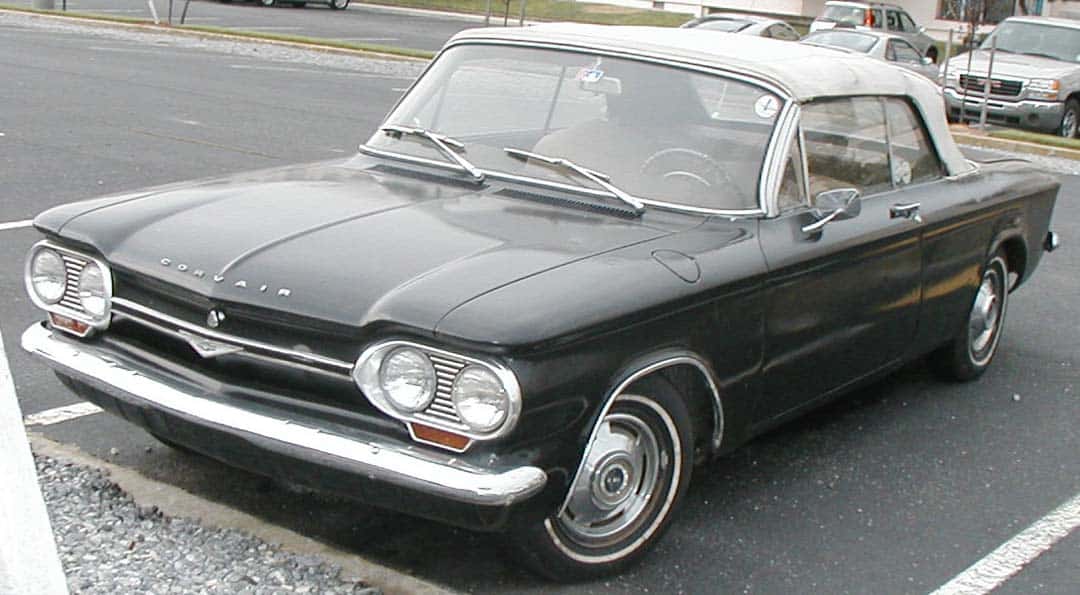
The Corvair, a groundbreaking but controversial model in the automotive landscape was designed as a compact car, designed with a rear-engine, air-cooled setup, inspired by European models like the Volkswagen Beetle. However, in his book Unsafe at Any Speed, Ralph Nader criticized the Corvair’s handling characteristics, particularly its swing-axle suspension, which he argued could lead to instability and accidents. Thanks to the controversy, the Corvair contributed to shaping future automotive safety standards and regulations.
2. 1960 Pontiac Ventura
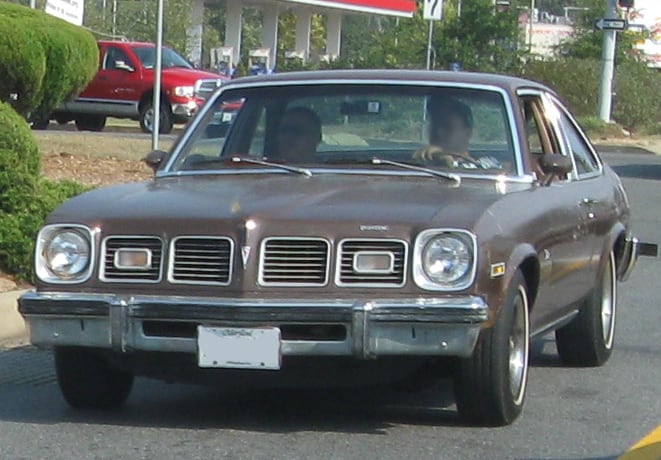
The Pontiac Ventura featured a range of body styles, including coupe and sedan, and was admired for its muscular design and powerful engine options. The Ventura played a role in the muscle car era, offering high-performance versions such as the Ventura II, equipped with a mighty V8. However, as consumers demanded more fuel-efficient cars, the Pontiac Ventura heeded the call, but the model was phased out in favor of actual compact models.
3. 1960 Dodge Phoenix
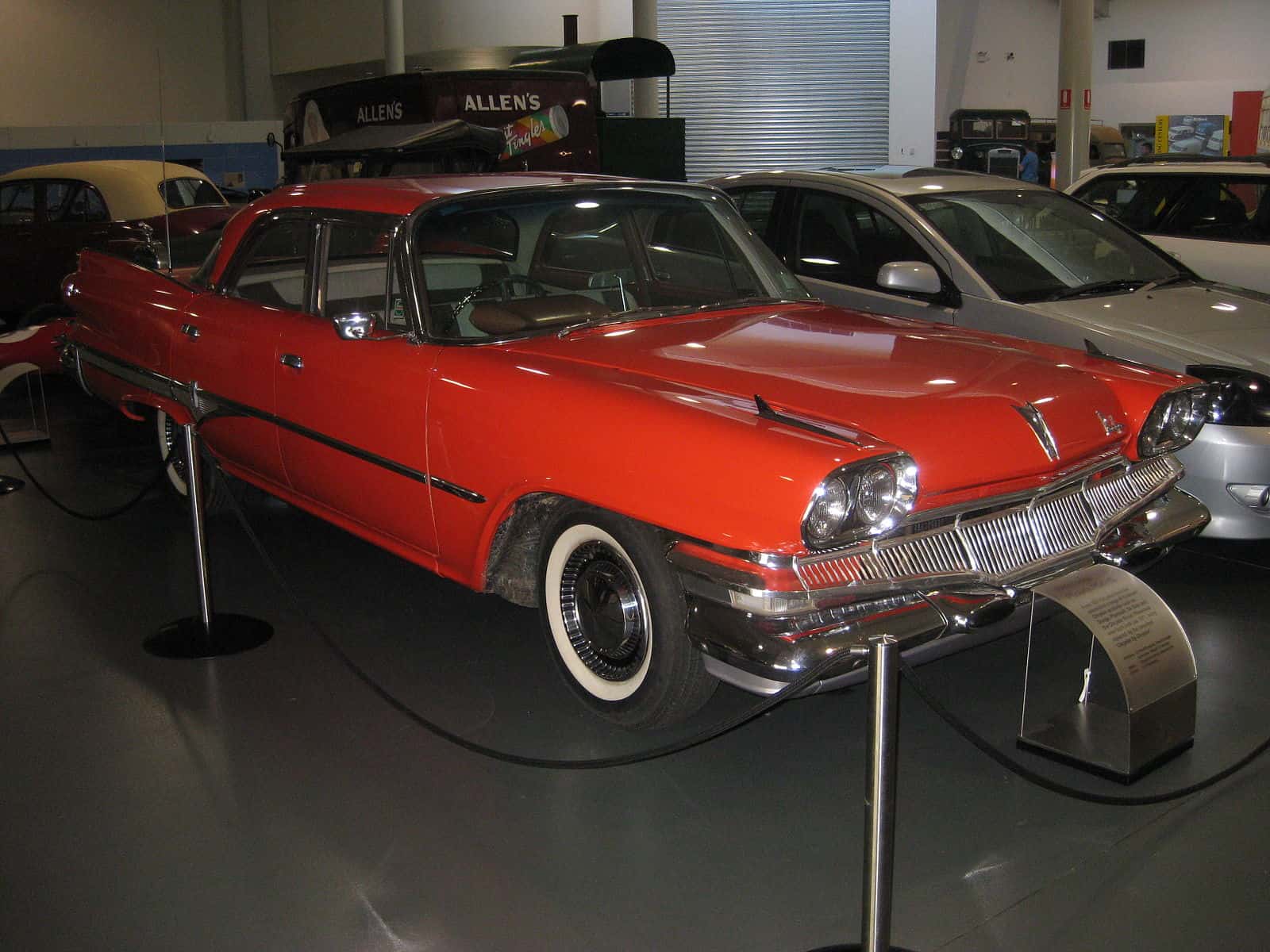
The Dodge Phoenix, produced primarily for the Australian market, was a full-size sedan that featured distinctive tailfins and chrome detailing. The Phoenix’s powerful V8 engine emphasized performance and speed. While the model was not well-known globally, it holds a place in automotive history for its popularity in the Australian car market between 1960 and 1973.
4. 1961 Alfa Romeo 2600
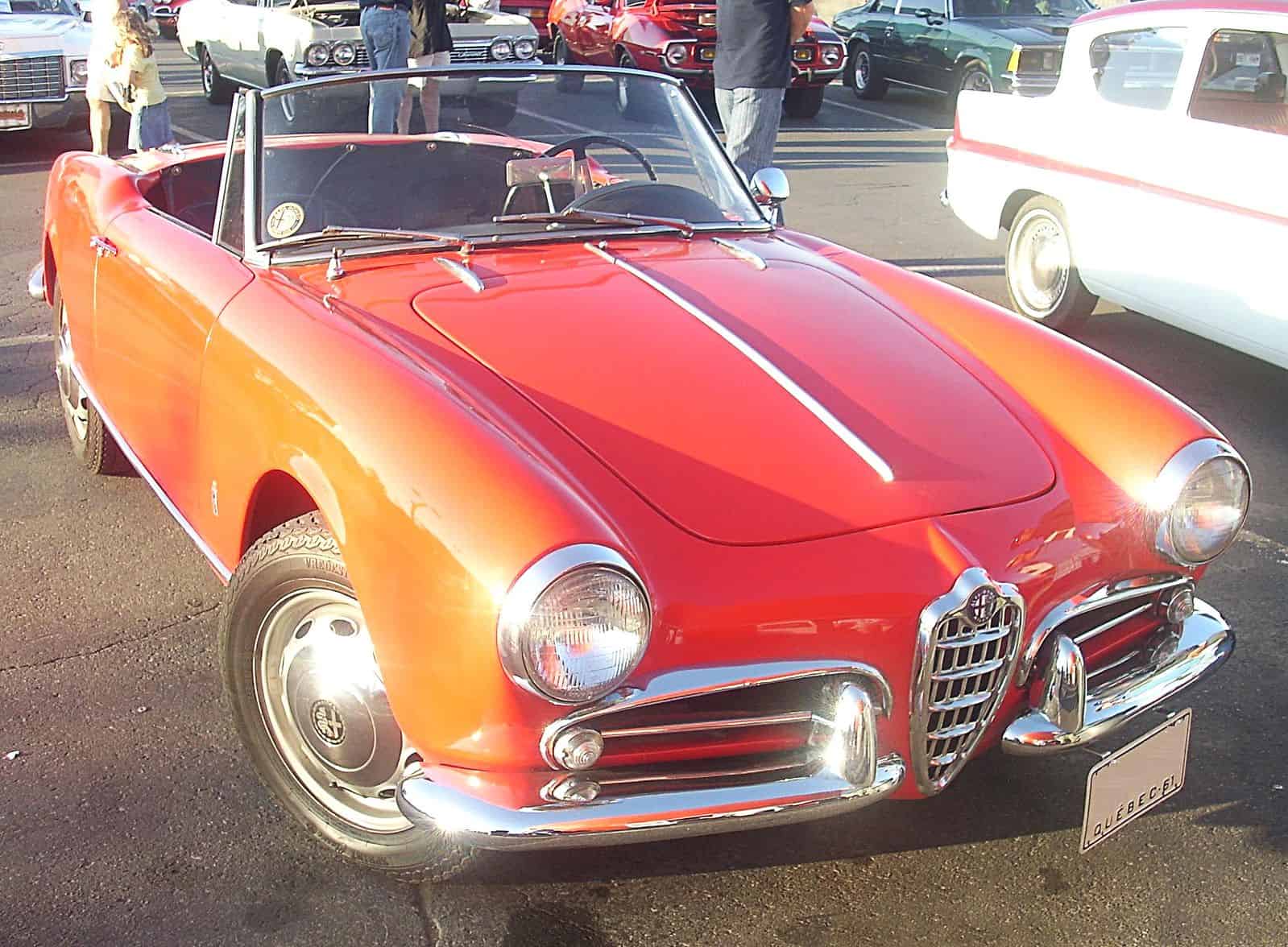
The Alfa Romeo 2600, produced from 1961 to 1968, included a Berlina (sedan), Sprint (coupe), and Spider (convertible), all powered by a 2.6-liter inline-six engine. The elegant and timeless design, coupled with advanced features for its time, like disc brakes and a sophisticated suspension system, demonstrated Alfa Romeo’s commitment to safety and comfort.
5. 1961 Jaguar E-Type
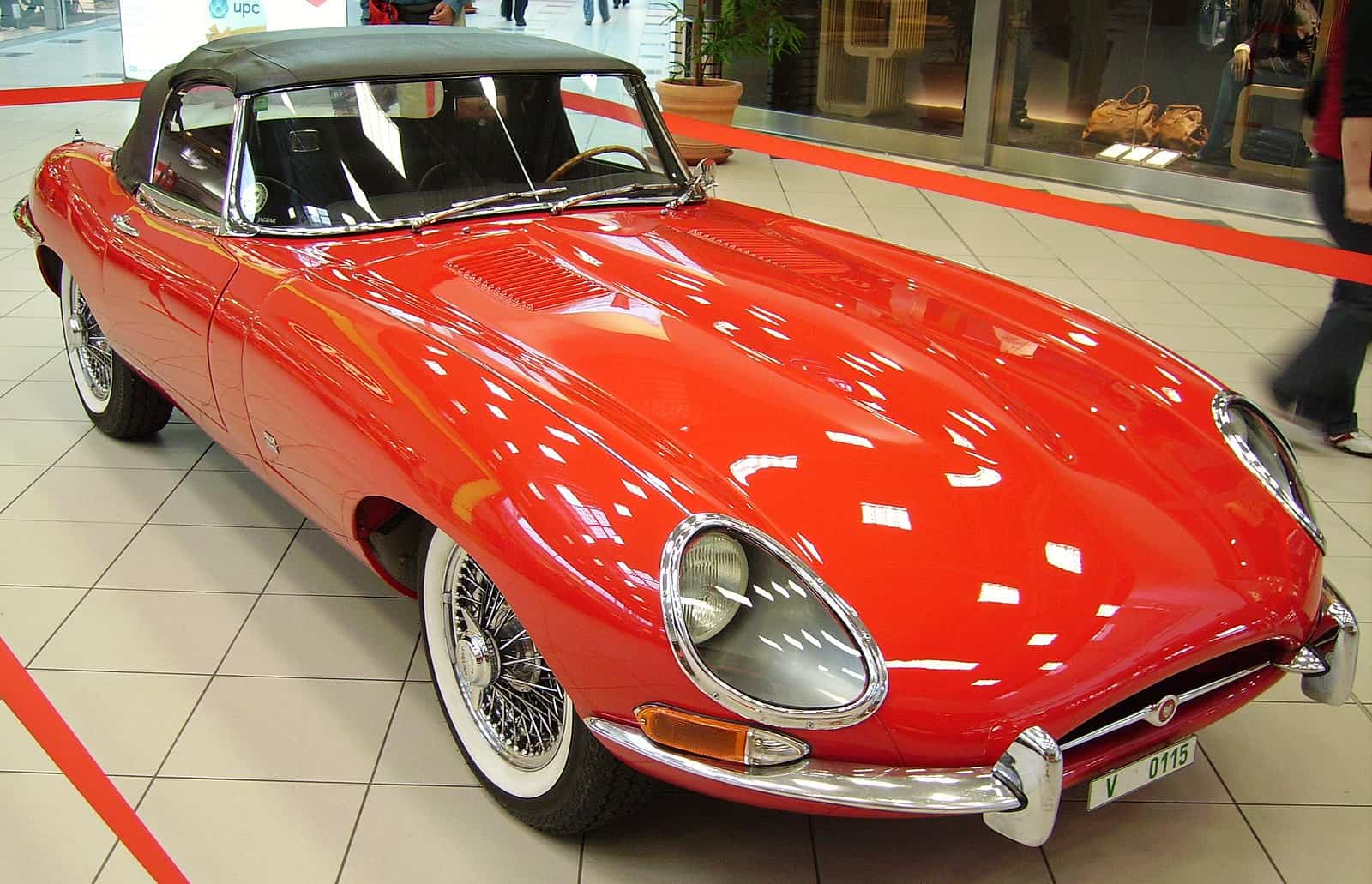
The Jaguar E-Type, launched in 1961, quickly became a symbol of 1960s automotive elegance thanks to its long hood, flowing lines, and distinctive headlights. Under the hood, the E-Type featured a potent inline-six engine, delivering impressive speed, the E-Type being lauded as one of the fastest production cars of its time. Fun Fact: In a very memorable scene from the 1971 movie Harold and Maude, Harold (Bud Cort) turns a Jaguar E-Type into a hearse.
6. 1961 Triumph TR4
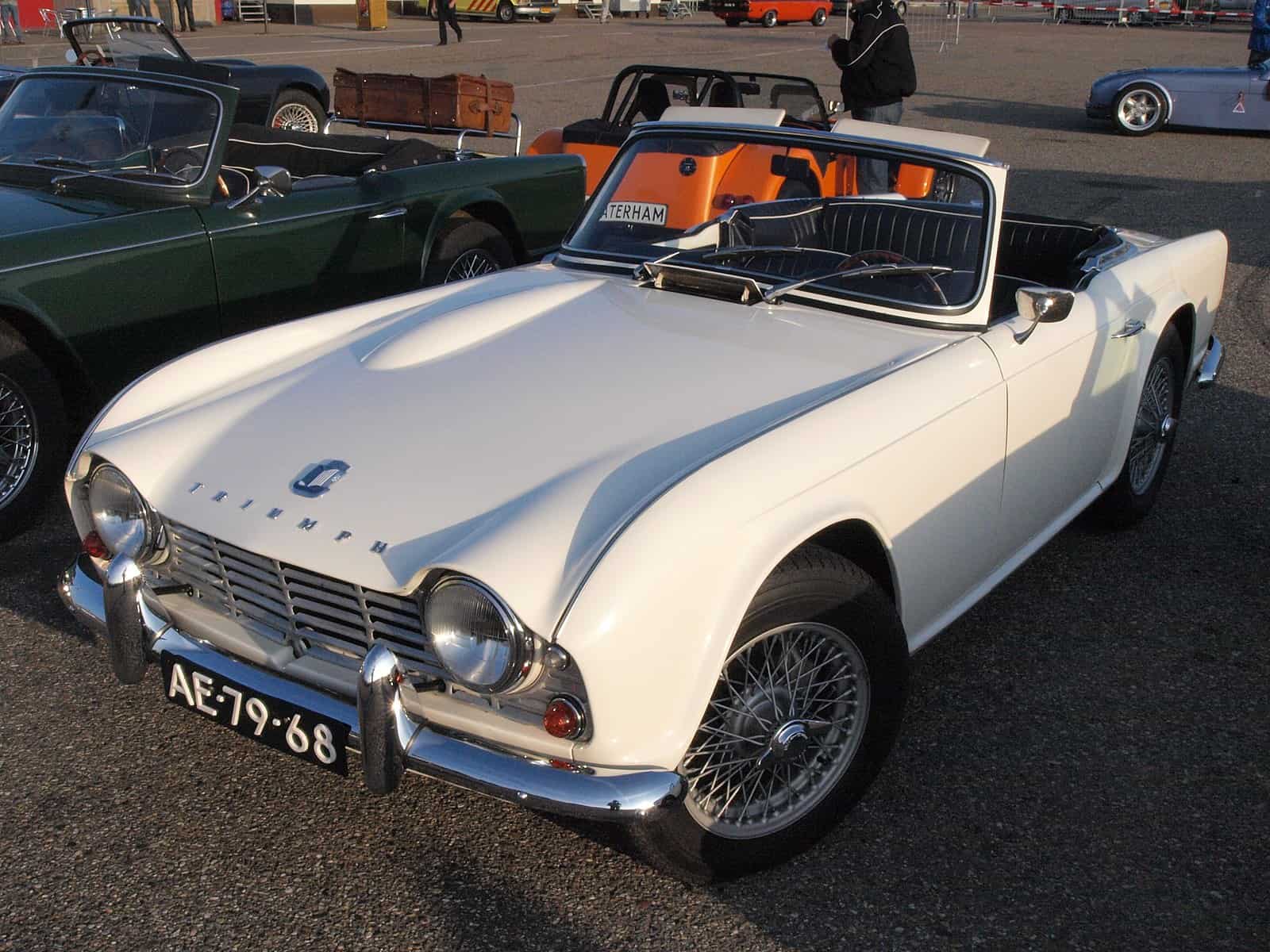
The Triumph TR4, a classic British sports car, featured a sleek and timeless exterior with a distinctive front grille and a wind-up window system. Powered by a wet liner 2.2-liter inline-four engine, delivering a balance of power and agility. The car’s independent rear suspension and rack-and-pinion steering contributed to its sporty handling. The TR4 was available in various configurations, including a convertible and a hardtop coupe. With its blend of classic British design and modern amenities, the Triumph TR4 was and is a beloved vintage sports car, and highly collectible.
7. 1962 Studebaker Avanti
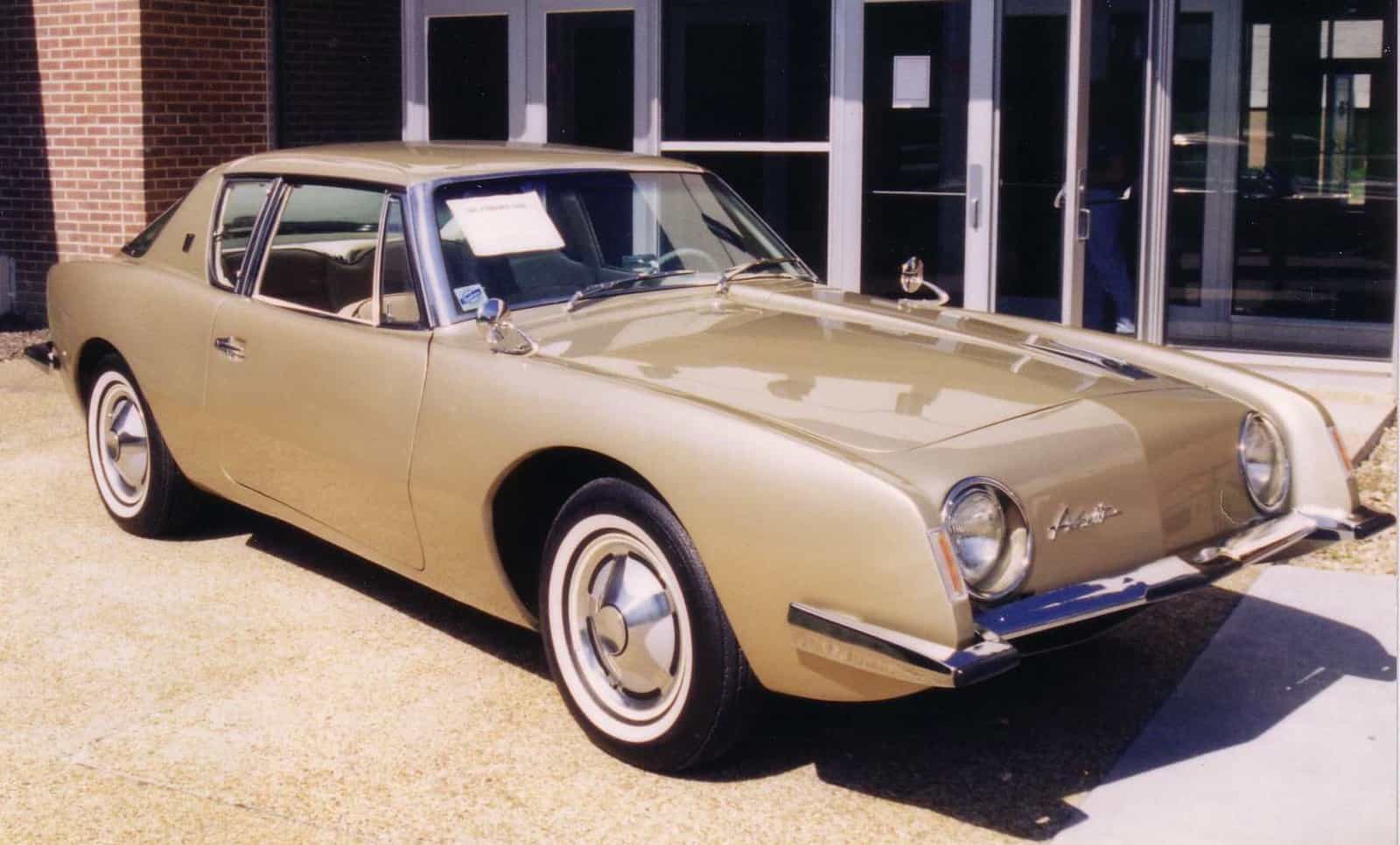
Of the 30 coolest released in the 1960s, The Studebaker Avanti is among the most unique. Introduced in 1962, the Avanti is a distinctive American automobile noted for its aerodynamic design and forward-thinking style. The Avanti featured a sleek, fiberglass body and a grilleless front end, while under the hood roared a formidable V8. The Avanti was one of the first American cars to feature front disc brakes as standard equipment. Despite its unique and striking design, the Avanti faced challenges in the market, including production delays and financial issues at Studebaker. With fewer than 5000 produced, the Studebaker Avanti is a collector’s dream.
8. 1962 Triumph Spitfire
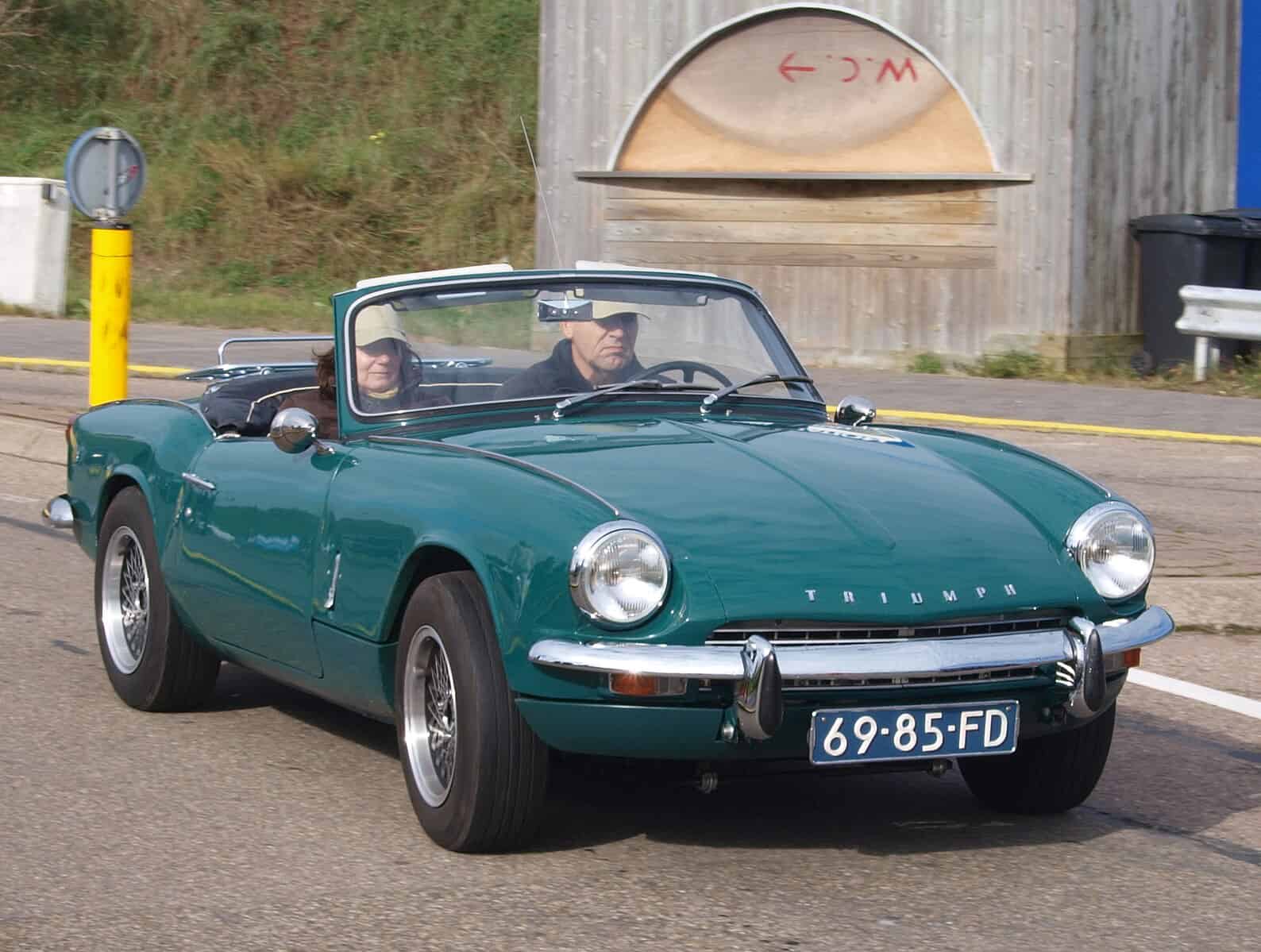 Source: Public Domain/Wikimedia Commons
Source: Public Domain/Wikimedia Commons

The Triumph Spitfire, produced between 1962 and 1980, was a classic British two-seat sports car that was affordable and accessible. Its lightweight construction, independent rear suspension, and agile handling made it a joy to drive. While not as powerful as some of its contemporaries, the Spitfire has maintained a dedicated fan base who appreciate its timeless design and simplicity.
9. 1962 Peel P50
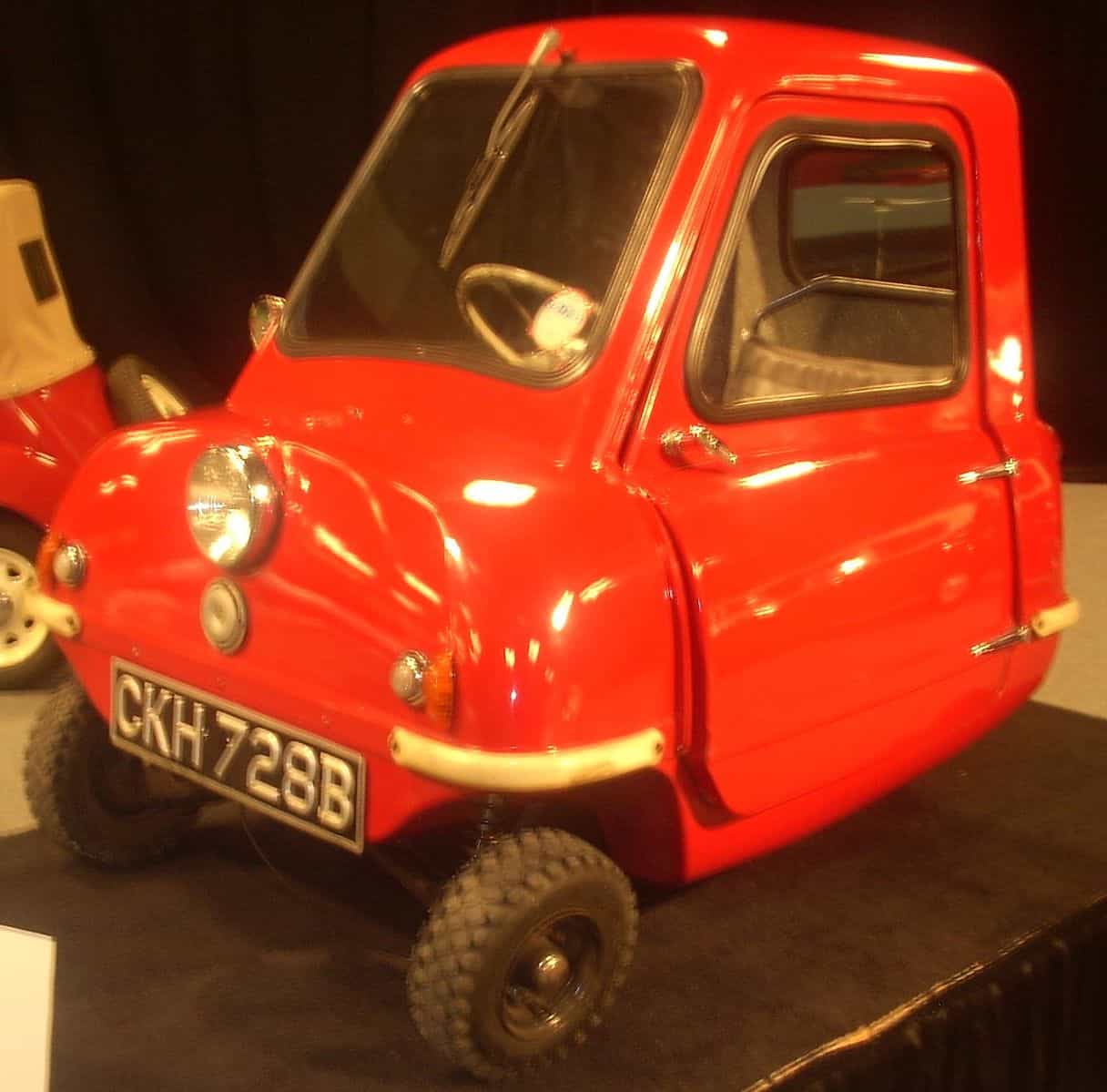
The Peel P50 was the smallest production car ever made. Manufactured on the Isle of Man by Peel Engineering Company in the early 1960s, the P50 measured 54 inches long and 41 inches wide. With a single seat, three wheels, and a distinctive bubble-like design, the P50 was marketed as a practical city car. Powered by a tiny 49 cc engine, the P50 had a top speed of 38 mph. Despite its limited practicality, the Peel P50 is a symbol of quirky automotive design and remains a sought-after collector’s item. Of note: Since 2010, the Peel P50 has been back in production, with each vehicle handmade to order. The company manufactures roughly 15 per year.
10. 1963 Honda S500

The Honda S500, introduced in 1963, set the foundation for the brand’s future success in performance-oriented vehicles. As the company’s first production car, the S500 was a lightweight and compact roadster that featured an economical 531 cc four-cylinder engine. Its innovative chain-driven rear wheels, independent suspension, and four-speed manual transmission contributed to its popularity while establishing Honda as a maker of sporty,fun-to-drive vehicles. With production limited to 1,363 units, the Honda S500 is highly collectible.
11. 1963 Lamborghini 350 GT
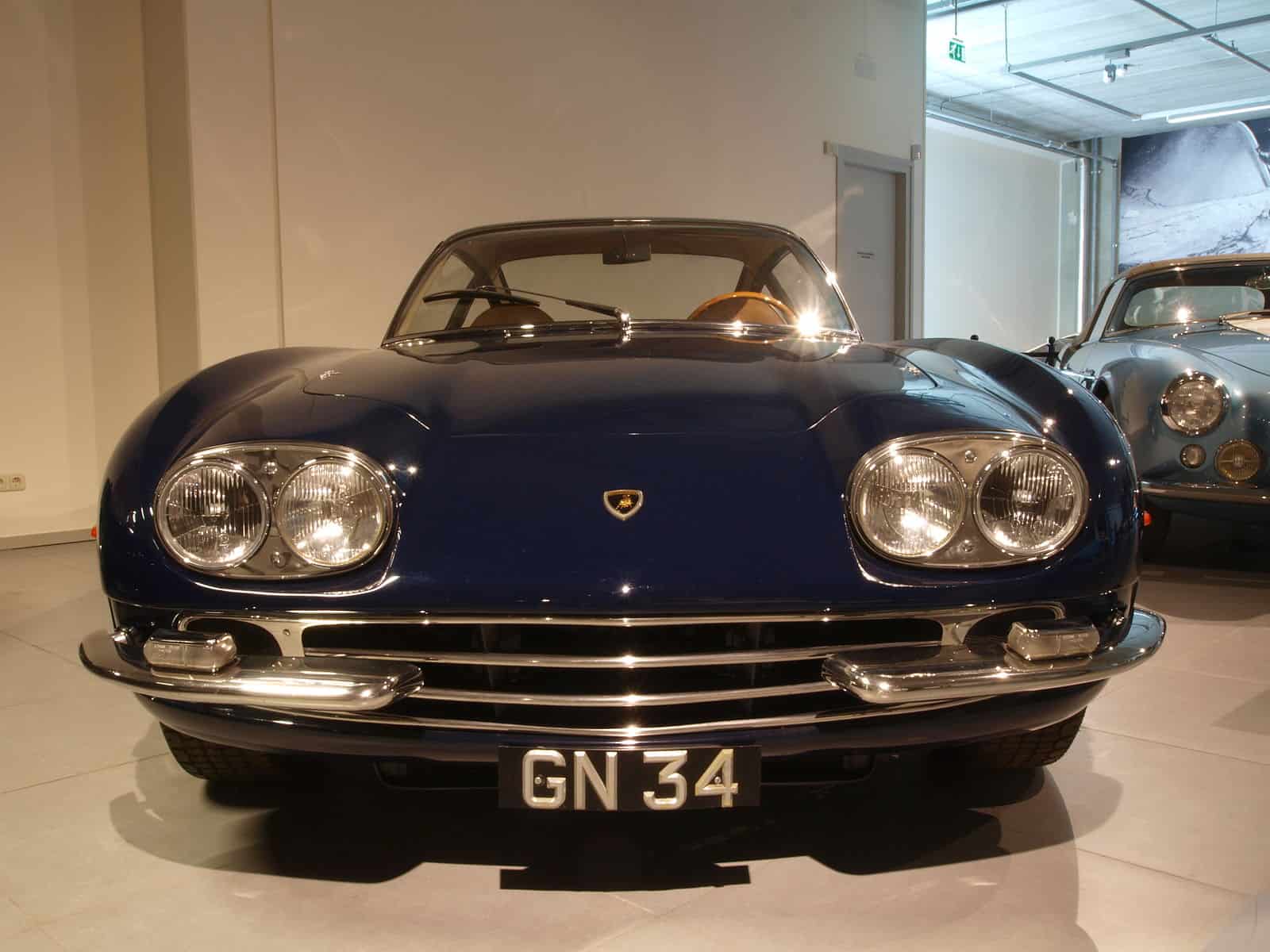
The Lamborghini 350 GT, unveiled in 1964, marked Lamborghini’s foray into the luxury sports car market and established the brand as a daunting competitor. A 3.5-liter V12 engine, delivering an impressive 270 horsepower and propelling the car to a top speed of around 158 mph, purred under the hood. The interior boasted a luxurious finish with leather upholstery and wood trim, setting the stage for Lamborghini’s reputation for high-performance, stylish vehicles. With only 120 units produced between 1964-1966, you’d better believe the Lamborghini 350 GT is a collectible.
12. 1963 Mercedes-Benz W 113
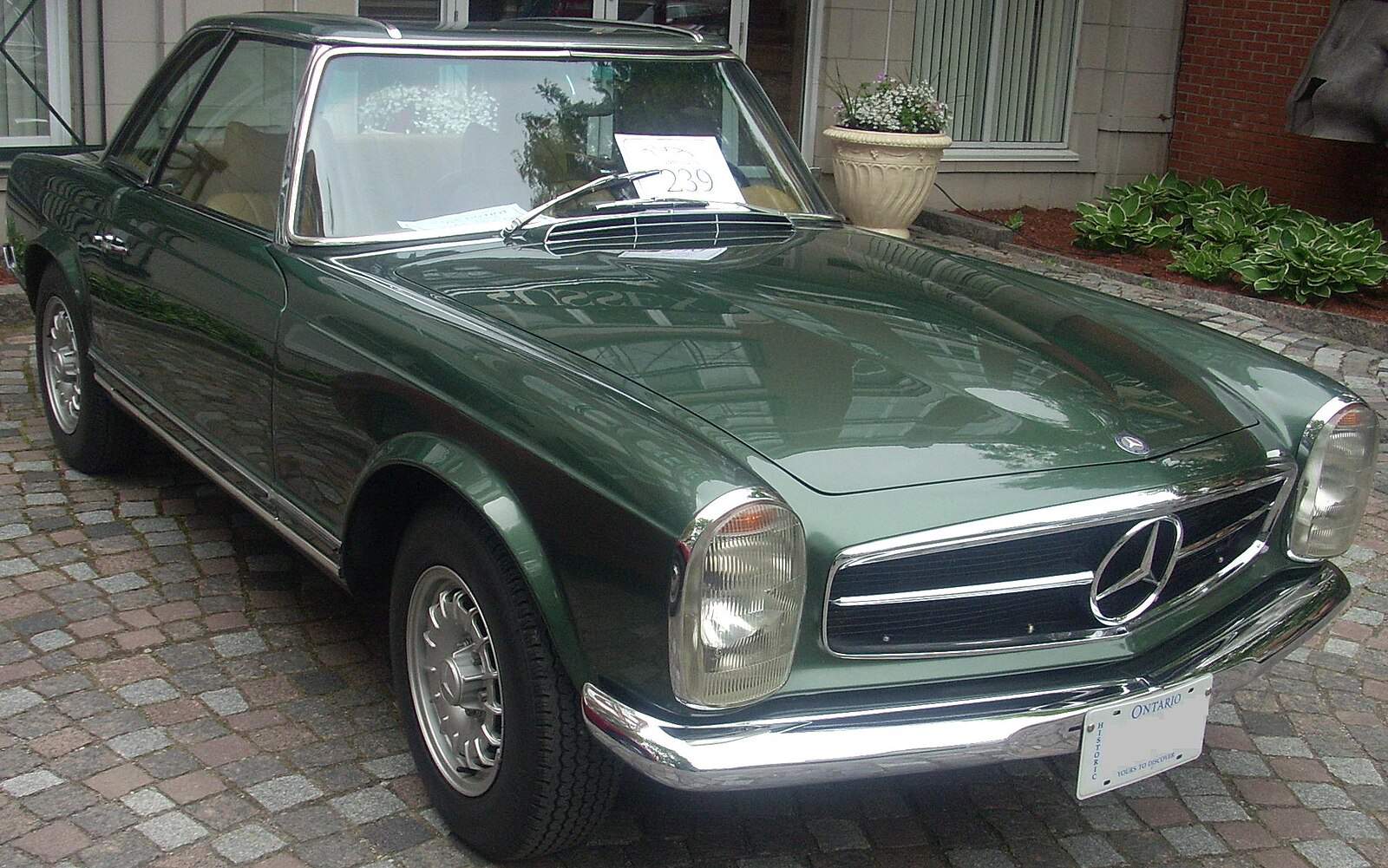
The Mercedes-Benz W 113 was a two-seater roadster produced from 1963 to 1971. The W 113 featured a distinctive concave hardtop that resembled a pagoda roof, contributing to its nickname Pagoda. With the Mercedes-Benz blend of luxury, performance, and safety, the Pagoda models offered a smooth and refined driving experience. With fewer than 20k imported to the U.S., the W 113 is a rare find.
13. 1964 Ford Mustang
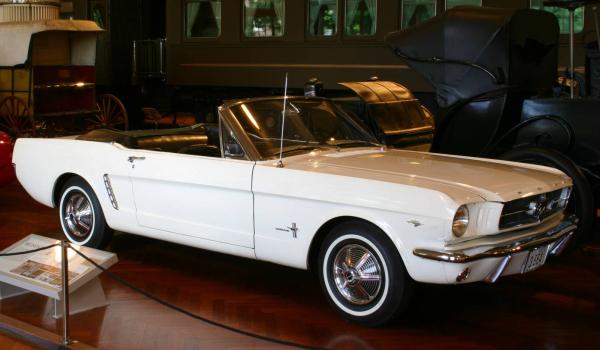
Of the 30 coolest cars released in the 1960s, the Mustang is the most iconic. Introduced in 1964, the Mustang mesmerized and monopolized the muscle car market. Appealing to a broad range of consumers, the Mustang was an instant success, with a variety of engine options and customizable features, allowing buyers to tailor the car to their needs. Over the years, it adapted to evolving automotive trends while maintaining its distinctive essence, making the Ford Mustang the quintessential American muscle car. Fun fact: The 1964 Mustang took 7.5 seconds to accelerate from 0-60 mph with a top speed of 89 mph. The 2024 model hits 60 in 4.3 seconds and has a top speed of 155 mph.
14. 1964 Plymouth Barracuda
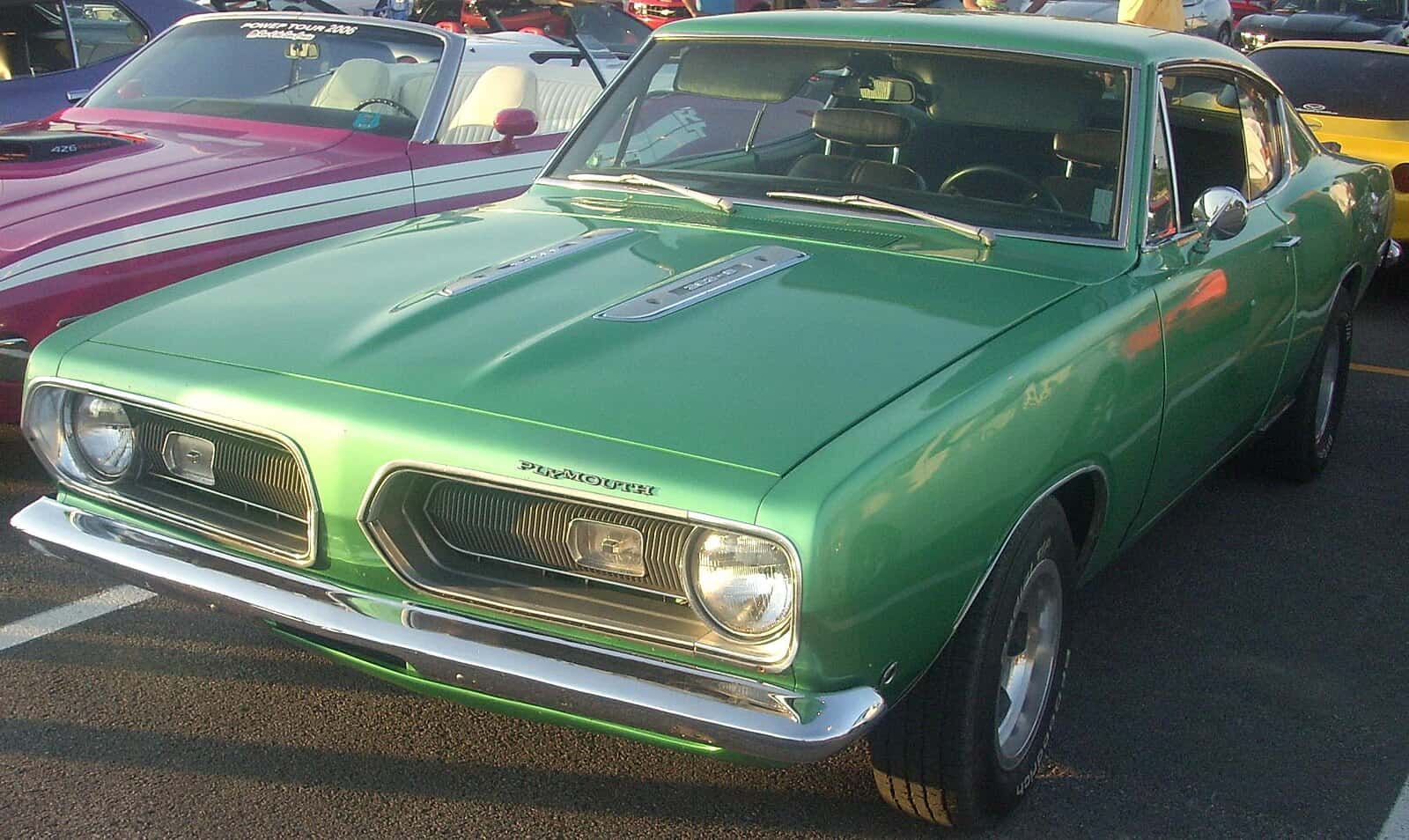
Timing is everything, and the Plymouth Barracuda, arrived just before the Ford Mustang exploded onto the market, overshadowing every other car around it. Initially a fastback version of the Plymouth Valiant, the Barracuda underwent significant transformations over the years. Faced with stiff competition and more stringent emissions standards, the Barracuda was retired in 1974.
15. 1964 Porsche 911

The Porsche 911, introduced in 1964, continues to be synonymous with performance, precision, and iconic design. Over the years, it has evolved through multiple generations, consistently maintaining its recognizable profile and rear-engine configuration. Its success on the racetrack, including a victory at the 1966 24 Hours of Le Mans, has contributed to the 911’s reputation as a high-performance and versatile sports car. Fun Fact: The 1964 took 8.3 seconds to go from 0-60mph, topping out at 130 mph. The 2024 Porsche 911 reaches 60 in a scant 4.0 seconds and has a top speed of 189 mph.
16. 1965 Chevy Impala

The 4th generation Chevrolet Impala, produced from 1965 to 1970, is recognized for its stylish design, increased size, and diverse range of configurations. Available as sedans, coupes, convertibles, and station wagons, the Impala catered to a variety of consumer markets. Most models featured powerful V8 engines, and options like air conditioning, power windows, and AM/FM radios, all relatively innovative advancements at the time.
17. 1965 Ford Bronco

The original 1965 Ford Bronco holds a special place in automotive history as a pioneering off-road vehicle. Introduced by Ford to compete with the Jeep CJ-5 and International Harvester Scout, the Bronco quickly established itself as a versatile and rugged option for both on and off-road adventures. Characterized by its compact size, removable hardtop and doors, its utilitarian design appealed to avid outdoorsmen. The 1965 Ford Bronco, an instant classic, laid the foundation for future generations of this legendary SUV. After a brief pause (28 years!), the Bronco is back on the assembly line.
18. 1965 Peel Trident

The Peel Trident is a quirky little microcar that embodies the essence of minimalist design. Manufactured by Peel Engineering Company from 1965-1966, returning in 2011, the Trident is a three-wheeled, bubble-shaped, diminutive vehicle with a modern aesthetic. With its distinctive clear dome top and tiny dimensions, if only it could fly, it would rival George Jetson’s bubble car. One of the smallest production cars ever made, the Trident was designed for urban commuting. Unlike the single-seater P50, the Trident accommodates the driver and a single passenger. In production again since 2011, Peel sells about a dozen made-to-order Tridents annually.
19. 1966 Chevy Camaro
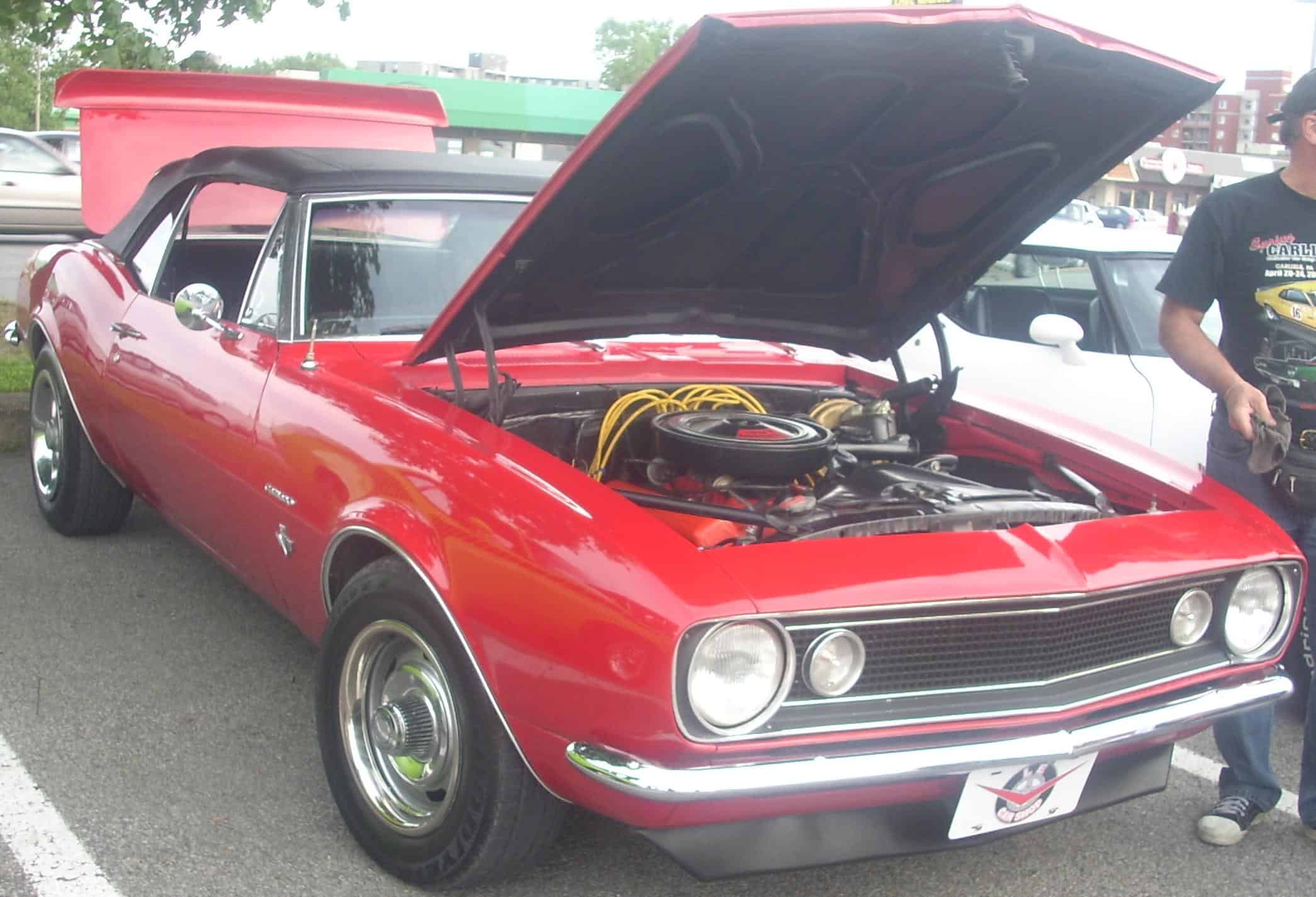
The Chevrolet Camaro has been a symbol of high performance and style since its introduction in 1966. Introduced by General Motors to compete with the Ford Mustang, the first-generation Camaro was available in coupe and convertible models, with a potent lineup of engines, from the base inline-six to more powerful V8 options. The Camaro’s success was not only attributed to its impressive powertrain options but also its handling and driving dynamics. The first-generation Camaro set the stage for the enduring legacy of the Camaro nameplate. Fun Fact: The 1967 Camaro SS could go from 0-60 mph in 6.0 seconds and had a top speed of 140 mph, while the 2024 Camaro SS gets to 60in just a shade under 4 seconds with a top speed of 180 mph
20. 1966 Oldsmobile Toronado
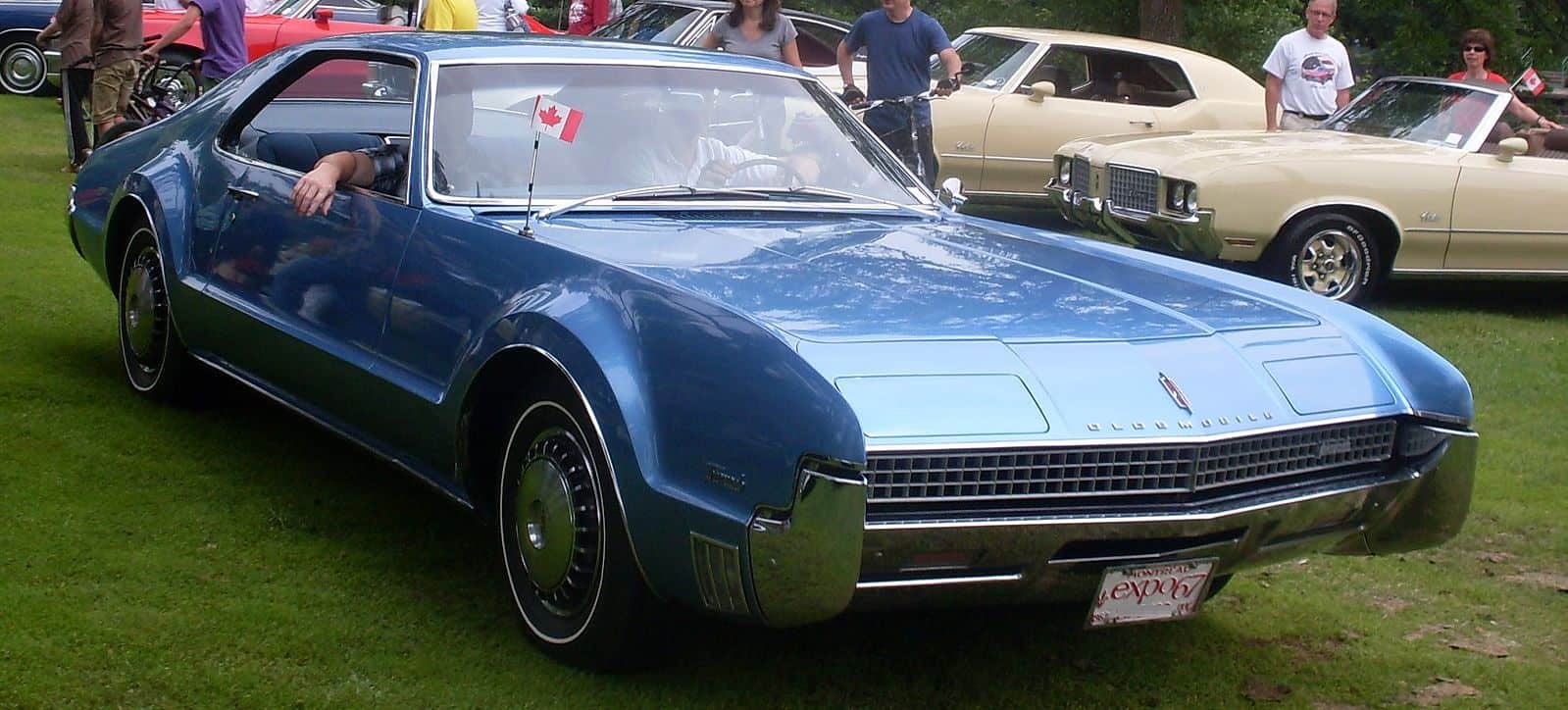
A groundbreaking luxury coupe introduced in 1966, the Oldsmobile Toronado was the first American front-wheel-drive car in three decades. The Toronado was ahead of its time with its innovative design and engineering. The car featured a powerful V8 engine positioned longitudinally, driving the front wheels. The Toronado was well-received for its comfort and cutting-edge features. Subsequent generations of the Toronado continued to refine its design, embracing advancements in technology. After a decent quarter-century run, the Toronado nameplate was retired in 1992.
21. 1966 Unipower GT
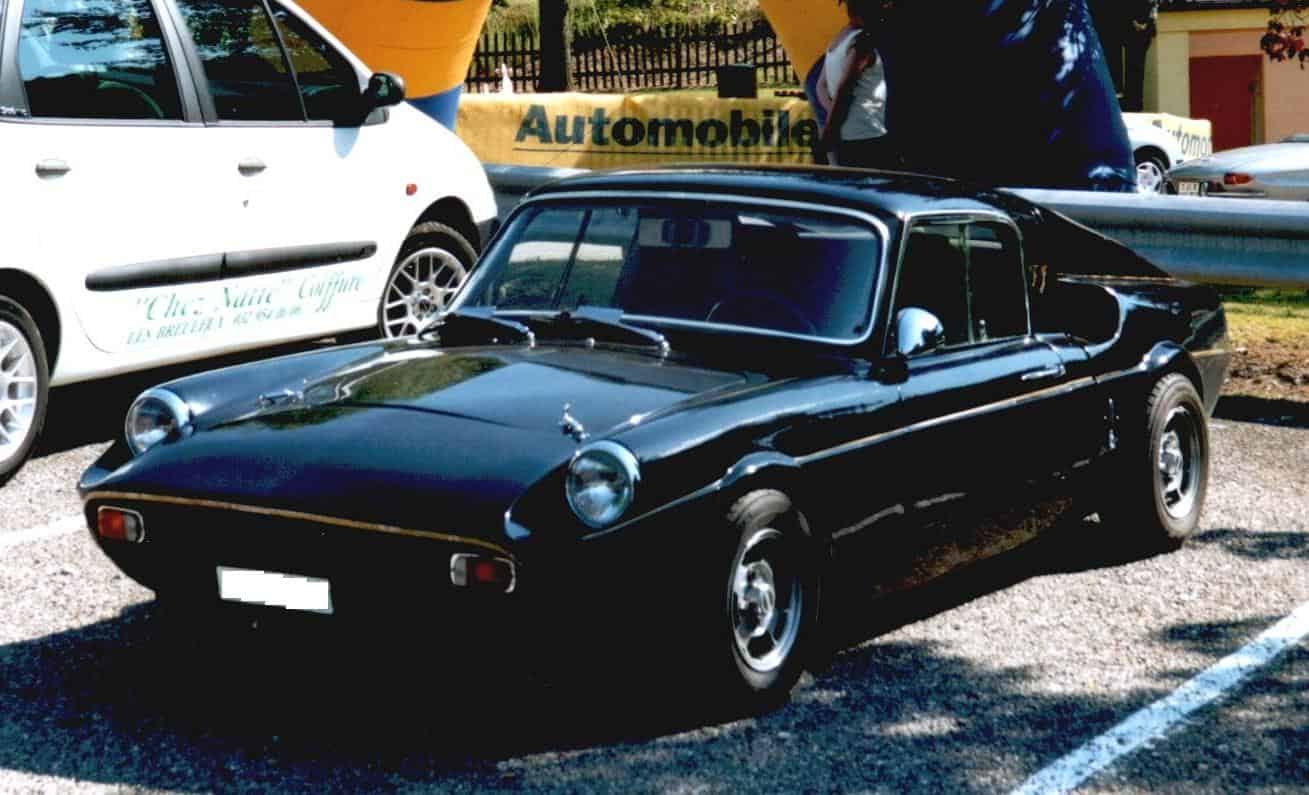
The Unipower GT is a rare British sports car produced by the Unipower Automotive company. The GT is a compact, mid-engined two-seater with a fiberglass body that focuses on lightweight construction. With only 73 units produced between 1966 and 1969, the Unipower GT is cherished by collectors for its design and spirited driving experience.
22. 1967 Mazda Cosmo

The Mazda Cosmo represents Mazda’s venture into the world of rotary engine technology. Introduced in 1967 as the first production car to feature a twin-rotor Wankel engine, the Cosmo marked a significant milestone for Mazda. Beyond its innovative engineering, the Cosmo showcased Mazda’s commitment to performance and style. As a limited-production sports coupe, the Cosmo laid the foundation for Mazda’s subsequent rotary-powered models and contributed to the brand’s reputation for innovation. In the five years the Cosmo was in production, fewer than 1,200 were manufactured, making it quite a find for an avid collector.
23. 1967 Pontiac Firebird

The Pontiac Firebird introduced in 1967, shared its platform with the Chevrolet Camaro. The Firebird was Pontiac’s answer to the burgeoning demand for high-performance vehicles, and its iconic Trans Am variant, the Firebird featured aggressive lines, hood scoops, and distinctive graphics. The Firebird underwent several generations, each adapting to the evolving automotive landscape and emission regulations. Production of the Firebird ceased in 2002, marking the end of an era for this legendary muscle car.
24. 1967 John Lennon’s Rolls-Royce
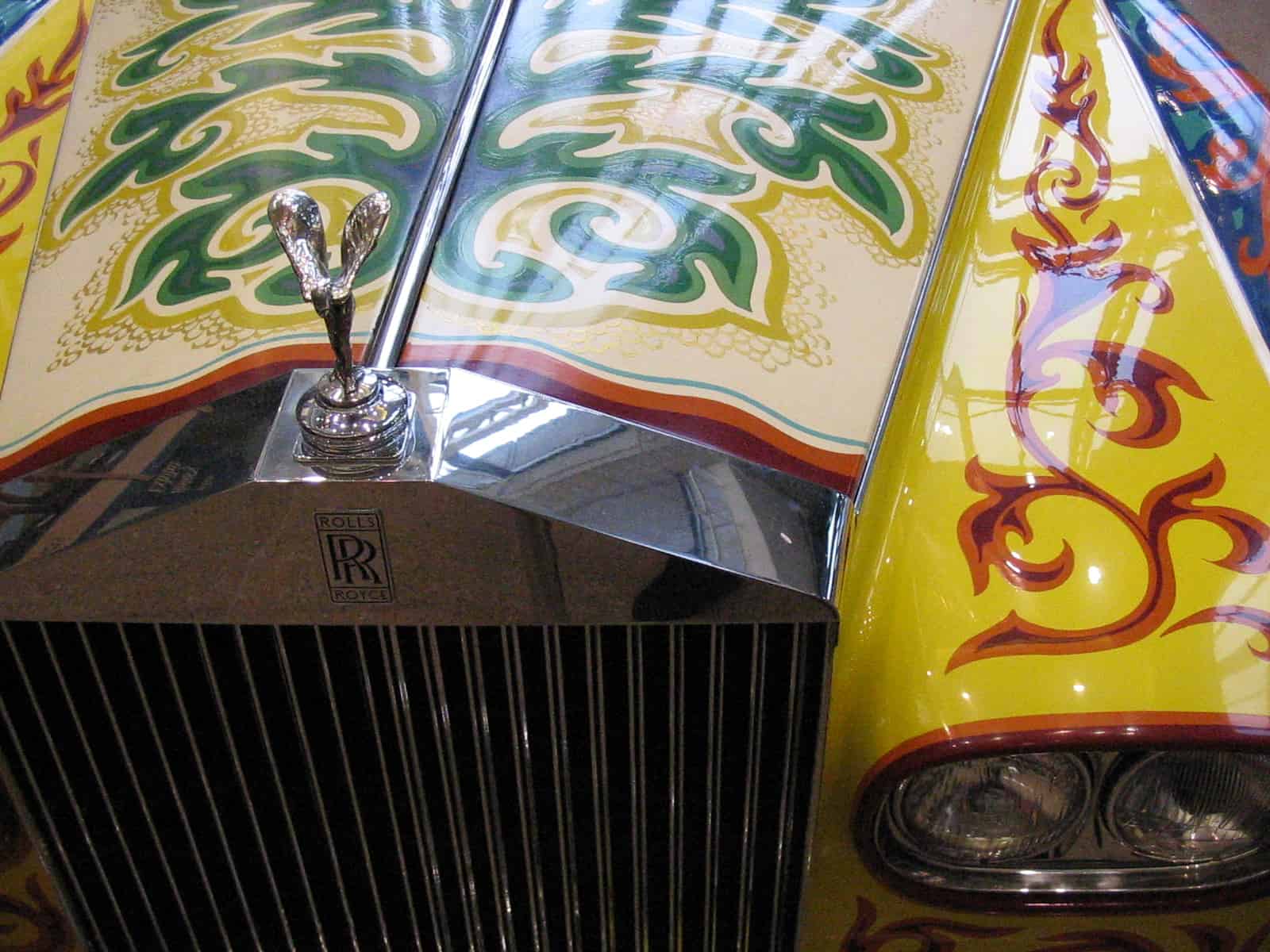
John Lennon’s Rolls-Royce is as legendary and iconic as the man himself- well, almost, anyway. In the 1960s, the former Beatle commissioned a psychedelic paint job for his Rolls-Royce Phantom V. The vibrant and intricate design, featuring colorful swirls and images inspired by pop culture, turned the luxury vehicle into a rolling work of art. The Rolls-Royce was the perfect match for Lennon’s avant-garde spirit. Today, the car is displayed at the Royal BC Museum in Canada, preserving the unique and visually striking legacy that was John Lennon’s Rolls-Royce.
25. 1968 AMC Javelin
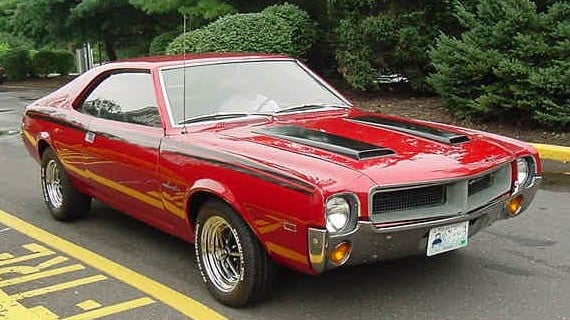
The Javelin, introduced by American Motors Corporation (AMC) in 1968, was a sports coupe designed to compete with established rivals like the Ford Mustang and Chevrolet Camaro. The AMC Javelin underwent several design iterations during its production run, including the potent AMX racer. The Javelin made its mark on the racing circuit, particularly in Trans-Am competition, solidifying its reputation for performance and agility. Production ceased in 1974, thanks to stricter federal regulations regarding bumper standards, implementation of which was deemed too costly, sounding the death knell for the Javelin.
26. 1968 Ford Torino
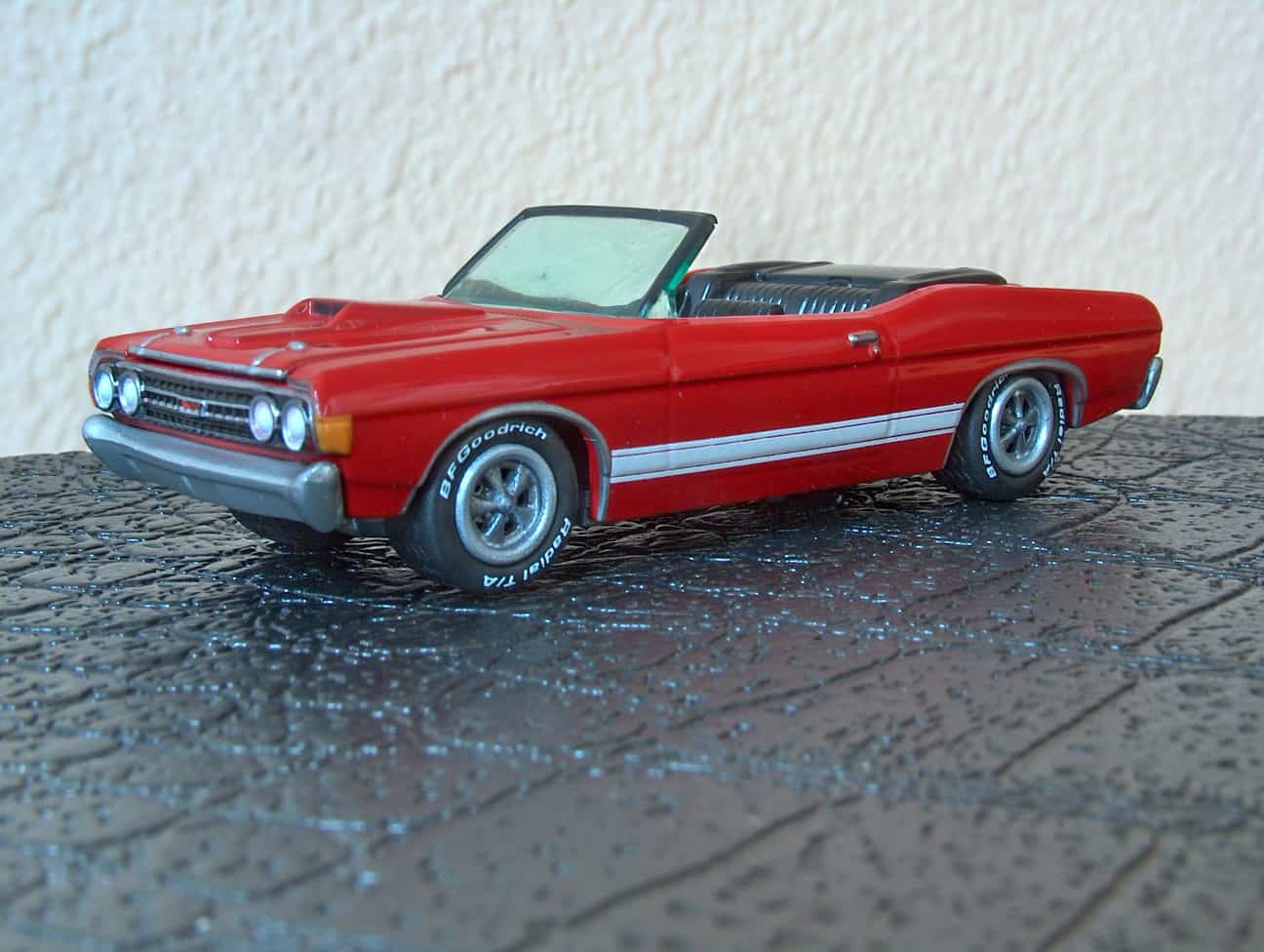
The Ford Torino, produced from 1968 to 1976, is a classic and versatile mid-sized car that underwent various transformations throughout its existence. Initially introduced as an upscale version of the Fairlane, the Torino evolved into a distinct model with its own identity. The Torino was a high-performance muscle car, especially the Torino GT and the Torino Cobra, equipped with potent V8 engines. The Torino also left a lasting impression on popular culture, notably as the on-screen vehicle in the television series Starsky and Hutch. The model was discontinued after 1976 as a result of Ford’s inability to meet new emissions standards.
27. 1968 Plymouth Road Runner
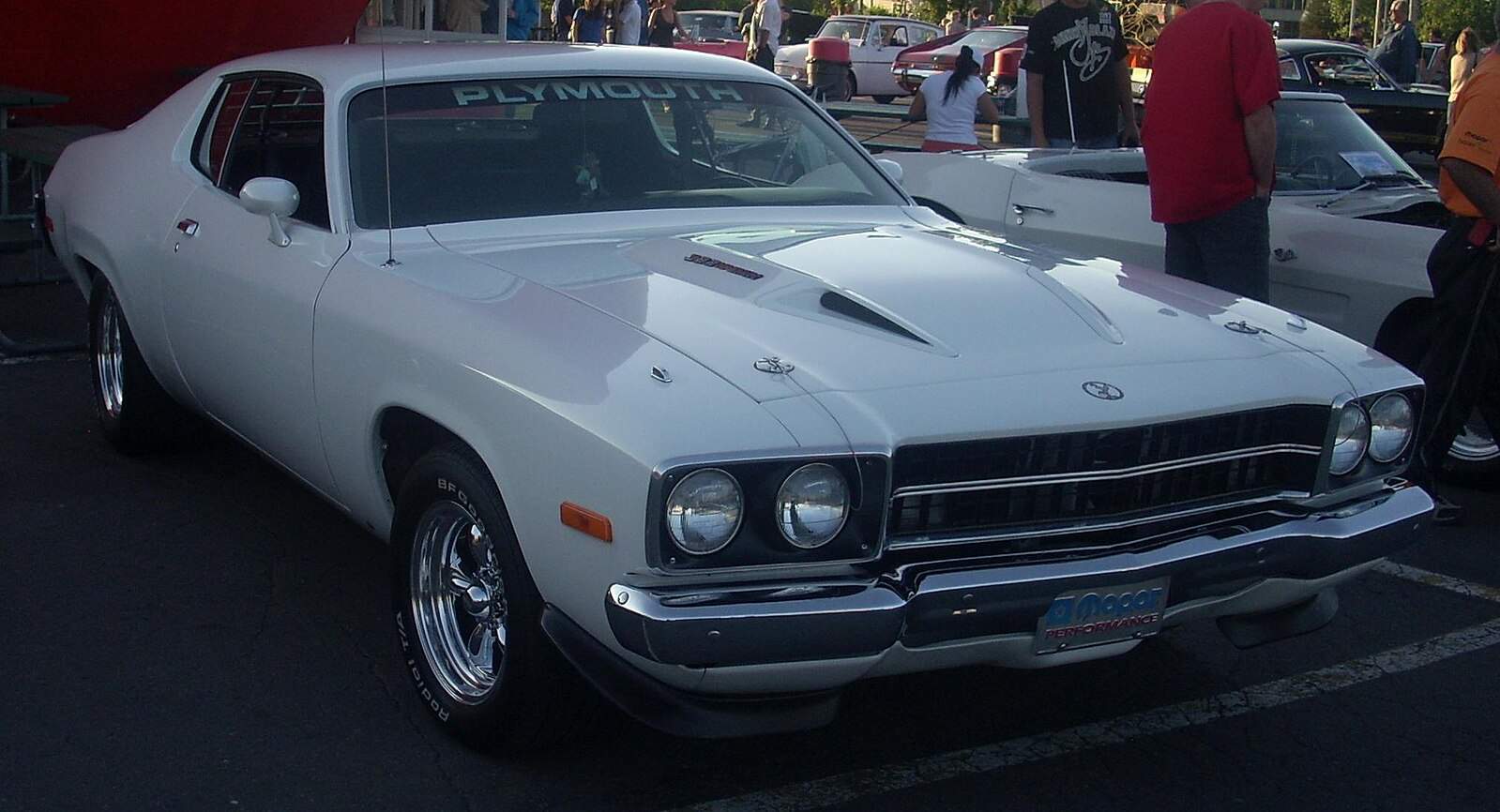
The Plymouth Road Runner, introduced in 1968, was an influential muscle car. Inspired by the cartoon character from Warner Bros., the Road Runner was designed to be a no-frills, high-performance vehicle, emphasizing raw power over luxury. With a focus on affordability and speed, the Road Runner offered potent engine options, including the iconic 426 Hemi V8, delivering exhilarating performance on the drag strip and the open road. The car’s minimalist interior and bold exterior graphics reinforced its no-nonsense attitude.
28. 1969 M-505 Adams Brothers Probe 16

The is a rare automobile that gained prominence for its unique design and appearance in the cult classic film “A Clockwork Orange.” Manufactured in the early 1970s by the British company Probe Motor Company, the car features a low-slung, futuristic body with gull-wing doors. With a mid-engine layout and a compact size, the Probe 16 was powered by a 1.7-liter V4 engine. Only three M-505 Adams Brothers Probe 16s were produced, of which two survive. The first M-505 Adams Brothers Probe 16, sold to American songwriter Jimmy Webb (By the Time I Get to Phoenix, McArthur Park…), was burned beyond repair as a result of an engine fire.
29. 1969 Manic GT

The Manic GT is a lesser-known Canadian sports car that was produced by Les Automobiles Manic Inc. Introduced in 1969, the Manic GT was a small, lightweight coupe featuring a mid-engine layout. Its design was reminiscent of European sports cars of the era, and it was powered by a variety of engines, including those sourced from Renault and Volkswagen. The car’s compact size and agile handling made it an engaging drive. Despite its limited production (160 units) and relatively short production run (1969-1971), the Manic GT is lauded as Canada’s muscle car. Fewer than 40 remain on the road.
30. 1969 Nissan Fairlady Z (S30)
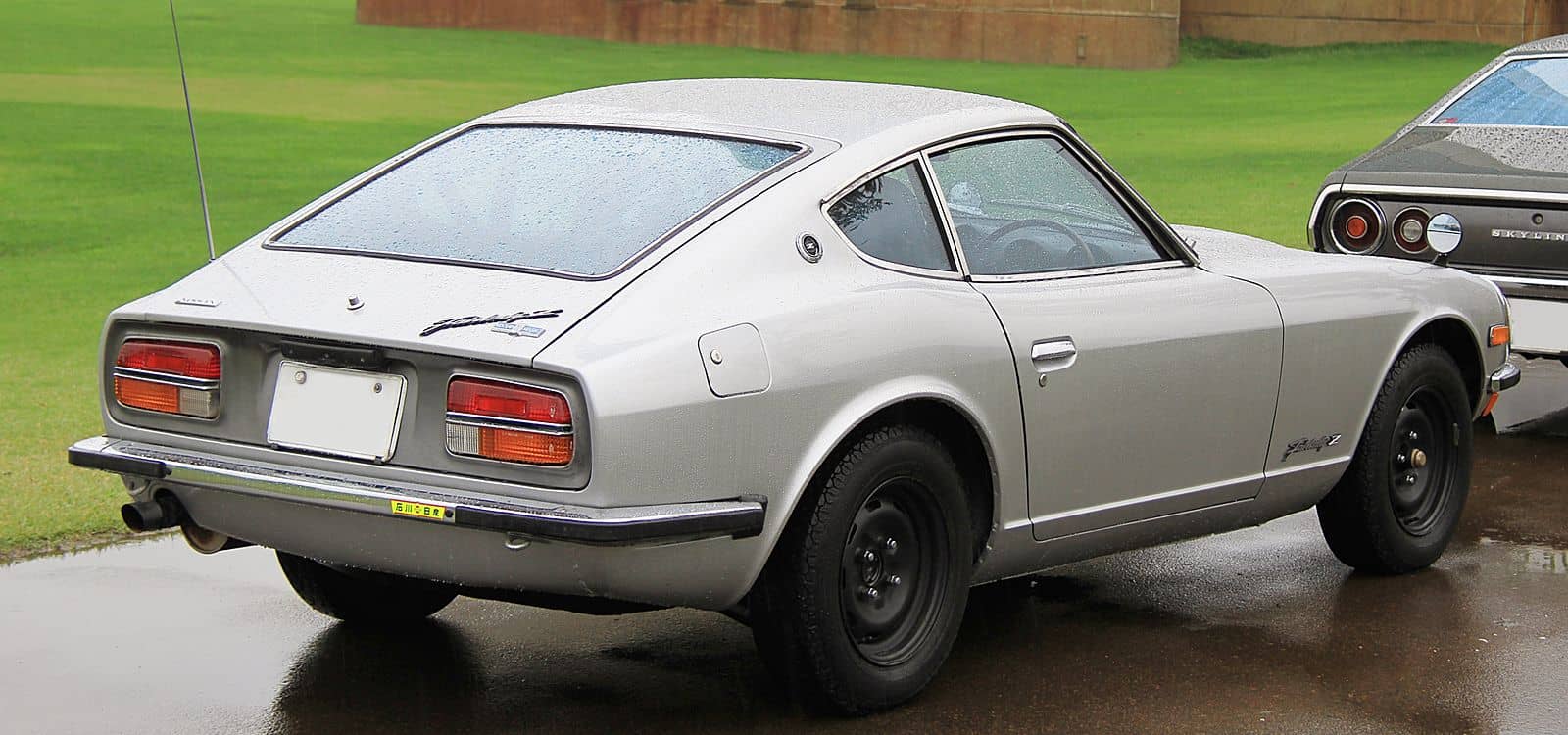
Introduced in 1969. The S30, known as the Datsun 240Z in the U.S., marked Datsun’s foray into the high-performance sports car market. The Fairlady Z gained popularity for its winning combination of style, performance, and affordability, challenging established competitors from Europe and the United States. Later known as Nissan, the Datsun Z models contributed significantly to the rise of Japanese sports cars. Fun Fact: The Datsun Fairlady Z had a top speed of 125 mph and went from 0-60 mph in 8 seconds. The 2024 Nissan Z hits 60 in 4.3 seconds and tops out at a respectable 155 mph.
Sponsored: Want to Retire Early? Here’s a Great First Step
Want retirement to come a few years earlier than you’d planned? Or are you ready to retire now, but want an extra set of eyes on your finances?
Now you can speak with up to 3 financial experts in your area for FREE. By simply clicking here you can begin to match with financial professionals who can help you build your plan to retire early. And the best part? The first conversation with them is free.
Click here to match with up to 3 financial pros who would be excited to help you make financial decisions.
Thank you for reading! Have some feedback for us?
Contact the 24/7 Wall St. editorial team.

